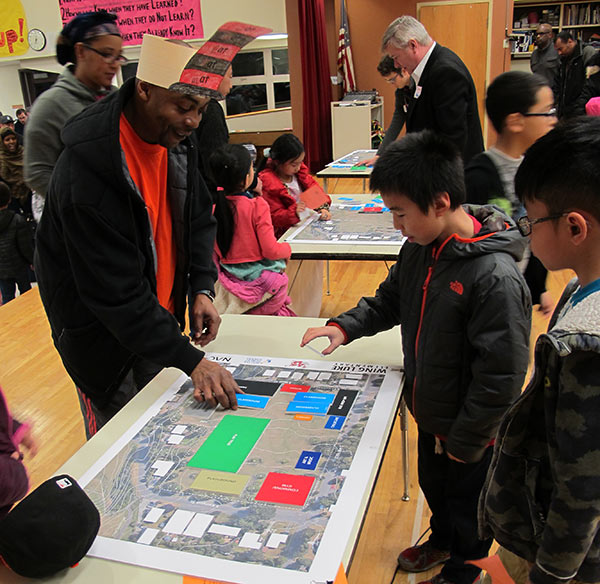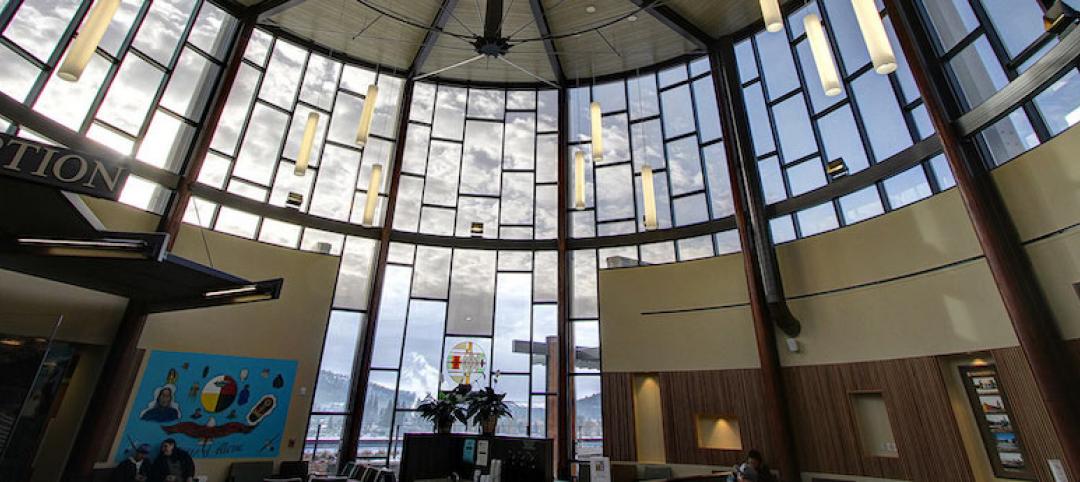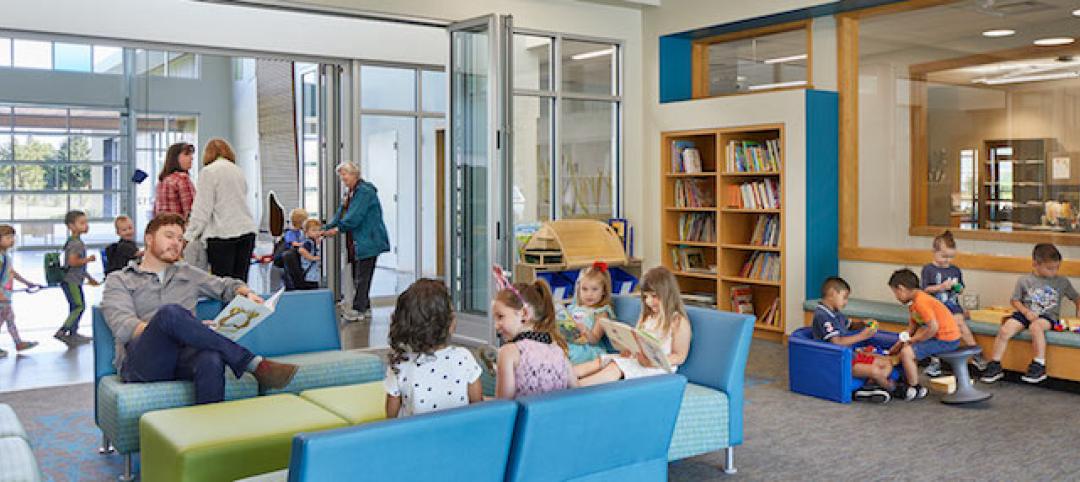For years, school districts have been seeking equity in the design of their school facilities. One area at the top of most educators’ minds is the opportunity gap for students of color, with a focus on African-American males who have historically been the most underserved. Many districts are tackling this subject head-on, addressing equity, inclusion, and diversity in schools in their strategic plans. Some specific approaches include hiring more educators of color and expanding ethnic study curriculum. Operationally, those two changes can bring about measurable progress for the experiences of students of color – but what can architects do who are also so closely engaged in the evolution of space for students of today and tomorrow?
What Can Architects Do?
Could the design of a school have measurable positive outcomes for children of color? If racial injustice in schools persists, despite the positive changes in school design over the past 60 years since school integration, what can architects do to help? Studies2 have documented how school facilities improve student outcomes and learning – but race and ethnic background have not received adequate attention in this field of research. If children of color are those statistically with the most barriers to success in our schools3, then architects should be working with districts to address those populations with our design solutions.
I am an architect working on public projects, and my focus on schools, healthcare, and higher-education buildings means that the emotional experiences of users and inhabitants are embedded in my consciousness. Architects like myself have always thought about how a building may affect students’ learning or teachers’ ability to teach. But it wasn’t until recently that I began to consider how school facilities should be participants in narrowing the opportunity gap. When it comes to designing and building schools, it seems imperative now more than ever to take a deep dive into how our buildings can positively shape the educational experience of the most disadvantaged learners. The facilities implications are many as we begin to tackle racial equity in schools.
 Wing Luke Elementary School Replacement, Community Meeting, Seattle Public Schools — NAC Architecture.
Wing Luke Elementary School Replacement, Community Meeting, Seattle Public Schools — NAC Architecture.
Analyzing Biases
Reboot is a research and design organization that aims to tackle issues in government, civil society, and philanthropy with an eye for analyzing biases and giving a voice to the most marginalized. In a recent article1, they explored the idea of implicit or unconscious bias (attitudes or stereotypes we unconsciously associate with others) and provided three ways to build bias checks into design research. The fact is, we designers need to help make the design process a more equitable experience for all. We need to build bias checks into our work process, creating small reminders that we all operate on auto-pilot sometimes.
Understand the Background. Research the issues, get to know the context, talk to the people involved, and hear where they are coming from. Ask what biases the design team may have about the project, place, or people, and take note of them and be aware of how they can influence decisions. Think critically about these biases and stay aware of them.
Uncover Biases with Local Involvement. Inviting community members to join the project design team will help remind designers how design decisions can potentially affect people and place. This allows a broader perspective to be shared, provides positive feedback to the design process, and establishes trust, which can take a long time to build between groups that aren’t typically aligned (i.e. architects with marginalized communities).
Clear up Assumptions with Visual Tools. Communicate and test ideas with end users by utilizing visual aids. Hopefully, the feedback received will shed light on any unconscious biases, and find positive solutions for areas needing revising.
A Call to Action for School Architects for the Next 10 Years
My other role that I take great pride in is being a parent to a first grader. Last fall when my school district, Seattle Public Schools, started addressing parents in a series of newsletters and information regarding their approach to closing the achievement gap for students of color, my ears perked up. Their strategies to increase opportunities for success in all students included “closely examining our practices and making sure students feel like they belong, experience welcoming learning environments and are safe in their identities.”
This read like a call to action for me. If architects and our allied professions could help educators with the seemingly insurmountable task of making all students feel equally welcome in schools and have their academic and social success reflect that, what a difference we could be making with our work.
Architects like to think of themselves as change makers. Can designers take on more responsibility and be the catalyst for change as school districts nationally are working to close the opportunity gap for disadvantaged students? It will take sincere, unbiased collaboration, with listening, testing, and assessing to begin to tackle this issue. What cultural norms should be reexamined? What assumptions have been made that may be wrong? What changes in facility design can we imagine to help narrow the achievement gap for students of color? We are already seeing some design strategies in action.
Some solutions can be small moves with large impacts. Classroom design, especially in middle and high school, is based on a traditional one-size-fits-all model with students in chairs listening to the teacher deliver information. This arrangement supports assessments and individual learning, but what if collaboration and peer-learning was the first priority? A classroom for differentiated, integrated, culturally-responsive learning might have a variety of seating options, opportunities to stand, and with a centralized focus for a shared and democratic classroom experience. No front or back of the classroom. Everyone accounted for, everyone a participant in a concentric community of learning.
Some solutions may require changes to instructional approach. Could more traditional English Language Learners spaces take on a more expanded role, to become language learning and immersion environments for all students, with an emphasis on cross-cultural appreciation and language familiarity?
 Wilson High School, Flexible CTE space connects to Shared Learning Zone, Tacoma, Washington — NAC Architecture.
Wilson High School, Flexible CTE space connects to Shared Learning Zone, Tacoma, Washington — NAC Architecture.
Some solutions may be much broader than just the learning environment. How might the school site design help revitalize a neighborhood that lacks outdoor space for play, garden space for growing food, or other community gathering needs? How might a school district engage with parents of historically underserved student populations to find out what services on campus might help support students and their families? We are beginning to see school food banks or clothing pick-up spots, but these spaces have not yet made it into standard programming. More consistent partnering with community support organizations is needed to help scaffold a student's experience beyond the classroom.
Some solutions might relate to the school day and student supervision. Does the school have sufficient space to provide after school care and activities for students? This solution should extend to non-school days and summers. Historically underserved students may come from families struggling to afford full-time care for students during summer and other school breaks. If districts can work with partner organizations on permanent, shared facilities that offer programs during those times, then the school begins to play a much more holistic role in a community in terms of opportunity and success for its most struggling students. Those spaces should not be overlooked even if they are flexible double-use ones. Educational Specifications should strive to consider the whole child, the whole day.
Conclusion
When it comes to the issue of school design and how to specifically improve outcomes for marginalized students, the area is still emerging. Architecture for Equity is in its infancy. First, we must begin with examining who the designers are. Second, overhaul the design process and make it more inclusive. Third, examine the current space assumptions for a school and analyze how they may not be serving the whole population. While it may not be possible to get everyone at the table, it is vital to get the right people, early – quality not quantity. The bridge-builders, the school mentors, the community advocates. If those individuals can join the design team and partner with the architects and district on understanding the school’s culture, challenges, and strengths, then the design process will benefit enormously.
More from Author
NAC Architecture | Apr 11, 2024
The just cause in behavioral health design: Make it right
NAC Architecture shares strategies for approaching behavioral health design collaboratively and thoughtfully, rather than simply applying a set of blanket rules.
NAC Architecture | Jan 26, 2023
6 ways 'choice architecture' enhances student well-being in residence halls
The environments we build and inhabit shape our lives and the choices we make. NAC Architecture's Lauren Scranton shares six strategies for enhancing well-being in residence halls.
NAC Architecture | Aug 4, 2022
Faculty housing: A powerful recruitment tool for universities
Recruitment is a growing issue for employers located in areas with a diminishing inventory of affordable housing.
NAC Architecture | Aug 22, 2019
Holistic wellness: What we can learn from Native American healthcare practices
Are there existing organizations that have already addressed some of these issues that we can study and learn from?
NAC Architecture | Dec 7, 2018
Planning and constructing a hybrid operating room: Lessons learned
A Hybrid operating room (OR) is an OR that is outfitted with advanced imaging equipment that allows surgeons, radiologists, and other providers to use real-time images for guidance and assessment while performing complex surgeries.
NAC Architecture | Nov 7, 2018
Designing environments for memory care residents
How can architecture decrease frustration, increase the feeling of self-worth, and increase the ability to re-connect?
NAC Architecture | Oct 8, 2018
One size doesn't fit all: Student housing is not a pair of socks
While the programming and design for these buildings all kept a holistic living/learning experience at the core, they also had amazingly different outcomes.
NAC Architecture | Sep 12, 2018
Security vs. 21st century learning: We shouldn’t have to choose
In order to effectively talk about school design, we need to start by understanding what a school is designed to do.
NAC Architecture | Jul 6, 2018
Building for growth: Supporting gender-specific needs in middle school design
Today, efforts toward equity in education encompass a wide spectrum of considerations including sex, gender identity, socio-economic background, and ethnicity to name a few.
NAC Architecture | May 29, 2018
Will telemedicine change the face of healthcare architecture?
Telemedicine is a broad term that covers many aspects and mediums of care, but primarily it refers to the use of video monitors to allow a virtual face to face consultation to take place.
















